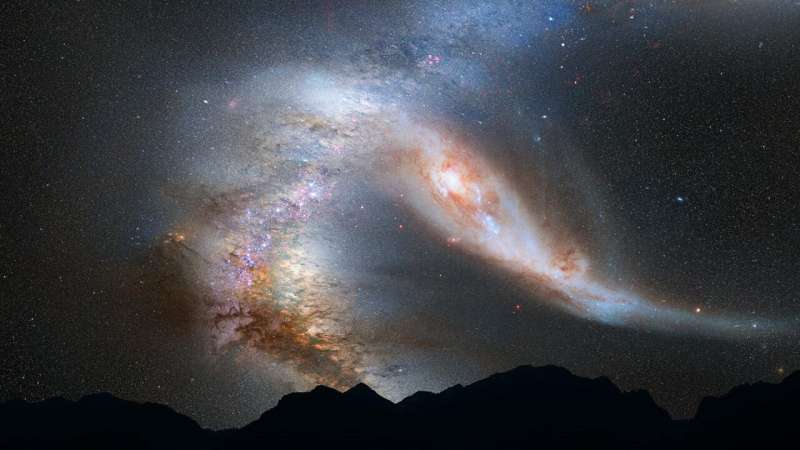Plasma jet deceleration could be caused by the interaction with the stars

Manel Perucho, professor of the Department of Astronomy and Astrophysics at the University of Valencia has proposed an explanation for the origin of the deceleration of plasma jets (loss of speed along the matter and energy channels emanating from the central regions of an active galaxy), a subject that has been debated in recent decades.
According to the expert, the surface of the plasma jet is continuously traversed by stars in its orbit around the center of the galaxy. Thus, the penetration and exit of stars disturbs this surface, generates turbulence and this favors the mixture of the gas of the medium, denser, with that of the jet. The dense gas load eventually decelerates the jet, as indicated by the radio frequency observations.
"It's like when you throw stones into the water and waves are generated. In this case, the idea is that the fall of stones is continuous and, taking into account that the surface that separates the jet from the medium is unstable, these waves produce turbulence and favour the entry of gas from the interstellar medium into the jet, which ends up slowing it down," says Manel Perucho.
Active galaxies are one of the most energetic and spectacular phenomena in the Universe. The fall of matter into the supermassive black hole of its nucleus produces enormous amounts of energy, and exceeds the luminosity of a normal galaxy by orders of magnitude. In addition, it has a fundamental relevance in the evolution of the galaxy and its surroundings (all galaxies are thought to have gone through an active phase in one way or another).
In some of these galaxies, plasma jets form, which are ejected from the central region and reach enormous distances. In turn, plasma propagates at speeds close to that of light. In 1974, radio astronomers Bernard L. Fanaroff and Julia M. Riley highlighted a morphological and luminous dichotomy in the jets, which has become known as the FRI-FRII dichotomy. Over time, different works exposed the differences in the context of the initial power of the jets. Thus, those of type II would be more potent and reach their point of interaction with the environment (interstellar within the progenitor or intergalactic galaxy), while those of type I would be less potent and decelerated by the entry of denser gas of the interstellar medium as they cross the galaxy itself.
The reason for the obvious deceleration of type I jets has been debated over the last decades. Different models have been proposed (instabilities, strong shock waves...) but they all collide with observational facts or are based on the growth of instabilities that require an initial disturbance. Perucho's work gives a possible explanation for the origin of this phenomenon.
More information: Manel Perucho. Triggering mixing and deceleration in FRI jets: a solution, Monthly Notices of the Royal Astronomical Society: Letters (2020). DOI: 10.1093/mnrasl/slaa031
Journal information: Monthly Notices of the Royal Astronomical Society Letters
Provided by Asociacion RUVID




















